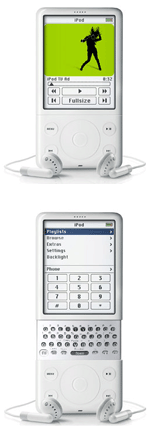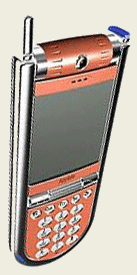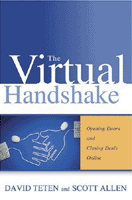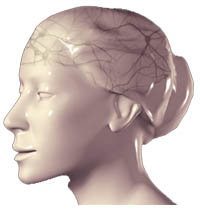By Christopher Rollyson Mobile Phones a Plum Market for Apple—If It Changes the Rules
 As mobile phones and smartphones become increasingly commonplace in mature and emerging markets, pundits increasingly predict that Apple will apply its design and experience expertise to field a mobile phone. Renowned for the elegance and simplicity of its devices and services, Apple provides unparalleled experience through world-class design of hardware, software and services. It delights and inspires customers by making the complex simple and beautiful. As mobile phones and smartphones become increasingly commonplace in mature and emerging markets, pundits increasingly predict that Apple will apply its design and experience expertise to field a mobile phone. Renowned for the elegance and simplicity of its devices and services, Apple provides unparalleled experience through world-class design of hardware, software and services. It delights and inspires customers by making the complex simple and beautiful.
The market for computing devices, wireless access and information (content) is at the point of convergence, and its value chain players—access providers, device makers and information providers—are vying to grow their influence. The digital device is rapidly becoming the hub for an unlimited number of information services. For many people, it is the main access device to the Internet, more than a computer. Within the market for devices, smartphones represent the convergence of PDAs and phones.
But the market for “music phones” is crippled by intractable value chain conflict. Can Apple use its core competency to create sustainable competitive advantage by changing the rules?
Are Rumors Grounded in a Solid Business Case?
The never-ending rumor of an Apple mobile phone is reaching another crescendo this holiday season, when device fetish spikes for the year as people think about gifts they would like to give or receive. For example, on December 22, The Wall Street Journal predicted that an Apple phone would be unveiled at MacWorld next month (Waiting on Apple Cellphone Call, subscription required). As usual, Apple has been coy, neither confirming nor denying rumors, which only increases curiosity. Meanwhile, Wired featured an intriguing article on how the iPod came together (The Perfect Thing) that offered several insights about how Apple innovates. Since this rumor has gone on for years, I’ll also feature some customer “art” that’s traipsed the Web near and far, from newest to oldest.
Why Apple Might Want an “iPod Phone”
- Conventional wisdom has it that handset capabilities are exploding, and design is improving, so the iPod’s competitive advantage is dwindling. Also, the U.S., where iTunes debuted, is notorious for being computer-centric relative to the rest of the world. As Motorola’s Jim O’Connor pointed out in Technology Outlook for 2007, most Internet access in the world is now provided through mobile phones, not computers, and this trend is increasing. The number of handsets dwarfs all other devices: 75 million mp3 players will be sold in 2007—and 750 million mobile phones.
- In the Valley (where Apple is located), the mantra has always been to aim for a small slice of a huge market rather than a larger piece of a smaller market. But this is, er, conventional, and Apple inspires us because it surprises us and bucks trends.
- The iPod business increasingly drives Apple’s stock price, providing 40% of all revenue in its most recent quarter. This is a big market to lose, and it’s getting bigger fast.
- Apple’s business strategy is reflected by its iLife suite: creating experience through digital entertainment. Phones and cameras are arguably part of that experience.
 Looking into the Past to See the Future: Key iPod Success Factors Looking into the Past to See the Future: Key iPod Success Factors
Apple innovated in several areas to create breakaway value with the iPod:
- Hardware: Apple broke new ground by using Toshiba’s (then) new 1.8 inch hard drive, which enabled the first iPod to hold 1,000 songs, a significant jump in quantity per device size at the time. It has continued to lead the category in size/design/performance.
- Software/Experience: perhaps even more important, the scroll wheel and interface enabled people to navigate their music in a highly intuitive way. With thousands of songs, it has to be practical and fun to navigate. The experience itself must add to, or at least not detract from, the entertainment experience. Apple positions its customers’ experience mostly in the fun area: “PCs are for work” even though “you can do that on a Mac, too.”
- Design: the device itself looked smashingly gorgeous, and it became an overnight fashion statement for virtually every demographic.
- Timing: Apple was late to the digital music device market but that didn’t matter because it changed the category through innovation; devices had been on the market for several years, but they were of little interest because they held too few songs and had poor battery life and interfaces. Apple’s core competencies enabled it to overcome these shortcomings.
- Business model: carrying thousands of songs in your pocket changed the model for how people experienced music: it is empowering customers to find, share and create music and video. Radio no longer is needed to discover music, nor are record companies to distribute it.
- Supply: the iTunes Music Store enabled users to buy a large variety of music legally; moreover, it provided a seamless user experience and instant gratification. Jobs’ role at Pixar bought him cred with music executives, which gave iTunes an important early lead. Today, the company is leading with introducing television and movies for video iPods.
- Standards: iPods play the industry standard mp3, but songs purchased at the iTunes Store are encoded in Apple’s proprietary format that will not play on other music players directly; they feature a DRM (digital rights management) system to protect music.
- Legal: Apple put itself in the middle of the struggle between music sharing consumers and angry/fearful music executives, and it took the high road by winning low prices and reasonable sharing ability along with DRM to limit piracy.
The Problems with Music Phones
There are two sets of problems with the concept of a music phone: business model and technical. Addressing the former, Wired’s Battle for the Soul of the MP3 Phone explains some of the difficulties posed by music phones and how the Motorola/Apple Rokr perished on the rocks. The intractable problem is that the three key players of the music phone value chain are not aligned around it. The value propositions of handset makers, music labels and wireless carriers are at odds, and the Rokr’s failure shows why. Wireless carriers did not want to carry it because the Rokr uses the iTunes Store and the computer to acquire music (Apple’s insistence), thus removing the value proposition to the carrier. Carriers make very little on providing talk time. In summary:
- Handset makers want to sell their devices, which can rival the iPod in terms of computing power. They are less concerned about music itself. However, they are beholden to carriers to subsidize and sell their phones.
- Wireless carriers make money by the network traffic generated when people buy songs through their phones, as well as by handling the billing. They serve as gatekeepers to the devices and try to force people to use their network. (ever try to exchange data between your phone and your computer or between phones? It’s an incredible hassle by design). Handset makers constantly complain that the carriers make them lobotomize their phones (Verizon forced removal of Bluetooth).
- Music labels want to increase demand for music without cannibalizing existing music sales. If an average CD has 10 songs and sells for $15, that implies $1.50 per song, and they don’t want to go much lower.
Placating all these players (and adding up their mark-ups) means that downloading music to wireless phones is far more expensive. Thus far, buying music through a phone, say, in the U.K., is more that twice as expensive as buying it through the iTunes Store. On the other hand, wireless customers worldwide spend billions on ringtones, often between $2 and $3 U.S. per ringtone. The logic goes that spending a like amount on music won’t be a stretch for consumers. In a bit of irony, buying a 30 second ringtone is often triple of the price of the whole song!
From the technical point of view, playing music and making/receiving phone calls are completely different. Music players have the circuitry and headsets to play high quality sound, while phones offer voice quality (much lower). Music players have large hard drives and batteries while phones have small flash drives for storing data, and their batteries are designed for spiky use (i.e. standby vs. talk), where music players are designed to use a consistent level of energy over a long period of time. Moreover, a dead iPod battery is unfortunate and inconvenient, but a dead mobile phone can be far more serious. For more on this, see Roughly Drafted’s excellent article, Why Mobile Phones Make Bad iPods. In addition, each component of an electronic device uses power differently (i.e. screens, hard drives, processors, antennas), and the more components that draw from the same battery make that power management less efficient. For more, see Wired’s Building a Better Battery.
 Smartphones: Music Phones? Smartphones: Music Phones?
Smartphones (Treo, Blackberry), which are truly handheld computers that usually combine a PDA and a mobile phone, offer a quantum leap in capability (and complexity). However, they are fundamentally based on a different proposition than music phones. They are work-based devices that feature text-based communication and keyboards. The primary interface is text-based and menu-driven. Most of them play music and have photo books. However, they are expensive and complex, and most users use very few of their functions. Moore’s Law can rectify the price but not the complexity problem. They do many things but none of them very well, and they offer little to no improvement over the energy problems of mobile phones (above).
Notably, they are being pushed because they align carriers’ and handset makers’ goals: they offer a large feature set and relatively high unit cost for makers, and they enable carriers to push their advanced network features, driving extra revenue. The only problem is, consumers often don’t buy the extra services, and adoption is proceeding slowly.
That said, smartphones do have an important bearing on the market for music because they do away with mobile phones’ proprietary operating systems, and they have far greater file sharing capabilities. Nokia’s head of multimedia, Anssi Vanjoki, predicts that P2P (peer to peer) file sharing will threaten the labels’ hegemony over music and delight carriers because file sharing will drive bandwidth usage. However, exchanging songs via Bluetooth would take the carrier and the label out of the loop. That said, I can see no reason why labels would not fight file sharing on phones the same way they did for computers, and file sharing over a network would be more trackable (and therefore easier to prosecute) than Bluetooth. Plenty of it would go on, but officially it will be illegal, and labels would protect their turf. This could present an opportunity for Apple, as it has a track record for offering a legal, fair solution.
How Apple Could Change the Rules for the Music Phone
Based on the technical and business problems posed by music phones, I doubt that Apple will field a device that combines a phone and an iPod. The devices are not compatible, and it’s not even clear that such a device would sell well. The complexity of such a device would be inescapable, its cost would be high, and (wireless) service providers wouldn’t want to subsidize it because it would enable customers to circumvent their networks for data sharing (as happened with the Rokr). That said, the market for phones is huge, and it is ripe for significant change in the near future, so I think Apple will address it, but it will do so in an unexpected way.
First, a couple of caveats:
- Apple will maintain its design strategy for encapsulating complexity. It popularized the entertainment device category based on the idea that they are “pods”—or extensions—of computers: they gain simplicity because much of the management of content is done at the computer, which enables more simplicity in the device itself. Notably, none of these devices require textual input; they are all menu driven.
- Apple will probably extend this concept to any phone design, treating the iPod as the player component and the phone as a separate wireless component.
- To address the growing part of the market that does not have computers to manage the content on their devices, Apple could offer hosted iPhoto, iTunes, Address Book and iCal capability through .Mac (website, managed via the phone itself or via Internet cafe).
 The Most Probable first offering: A Mobile Phone That Is NOT a Music Phone The Most Probable first offering: A Mobile Phone That Is NOT a Music Phone
This phone would feature Apple’s drop-dead design looks, and it could be designed to be complementary to iPods and be priced so that customers would pay full price, as they do for iPods. The phone would provide iLife-enriching Web browsing and a video and still camera. Moreover, it could be sold as an unlocked GSM phone that customers would buy on their own, so it would not have to depend on carriers’ good graces to sell. Unlike other device makers, Apple has well developed retail and service capabilities. Having a really cool phone that was comparable in cost to a Nano or an iPod would be within reach of many people. For people who really wanted one device, some models could even offer a docking feature that would snap the two together in some way.
Taking the idea further, if Apple Bluetooth-enabled iPods, the phone and iPod could share information seamlessly. The company already pushes this concept with iSync, but the problem is that the phones aren’t terribly compatible with it, a bête noire for power users. For example, the phone could leverage the iPod’s large memory capacity. In effect, they could operate as one device, bonded by Bluetooth.
Having such a phone would significantly extend Apple’s brand experience to many more people; it would expand the iLife footprint. It would be profitable for Apple and play to the company’s core competencies. It wouldn’t be very risky. As to whether Apple would become an MVNO (Mobile virtual network operator) like Virgin Mobile, I would bet against that, right away at least. It’s a brutal, low-margin business outside of Apple’s core competency.
The Runner up: A VoIP Phone
 More interesting still would be if Apple were to partner with Skype to field a VoIP (Voice over Internet Protocol or Internet calling) phone. This would offer free calls to other users anywhere in the world and no wireless contract, and it would become increasingly viable as hotspots grow and cities become metropolitan-wide hotspots. Skype offered North America users free “SkypeOut” calls (Skype users call any normal phone number) for most of 2006 in a bid to drive member subscriptions, and Apple could be a very effective partner to drive Skype memberships (which are free). Skype already offers “normal” phone numbers (“SkypeIn”) so that any phone can call a Skype member as well as voice mail, chat, video chat, conferencing, etc. More interesting still would be if Apple were to partner with Skype to field a VoIP (Voice over Internet Protocol or Internet calling) phone. This would offer free calls to other users anywhere in the world and no wireless contract, and it would become increasingly viable as hotspots grow and cities become metropolitan-wide hotspots. Skype offered North America users free “SkypeOut” calls (Skype users call any normal phone number) for most of 2006 in a bid to drive member subscriptions, and Apple could be a very effective partner to drive Skype memberships (which are free). Skype already offers “normal” phone numbers (“SkypeIn”) so that any phone can call a Skype member as well as voice mail, chat, video chat, conferencing, etc.
Of course, the hitch with a VoIP-only phone is that it wouldn’t be usable everywhere. Moreover, logging into hotspots isn’t for the faint of heart sometimes, and the phone wouldn’t have a robust ability to deal with complications since it wouldn’t have a keyboard.
In this case, the phone would not even be a mobile phone in the traditional sense since it wouldn’t use any existing cellular network. Apple would partner with a WiFi provider to provide a consistent level of service. There could be any number of tie-ins with other services such as iChat, Apple’s Skype-like instant messaging service.
Having a VoIP phone would position Apple as a leader in digitally native communication, where telephony is going anyway. If calling were free, that would be a significant value proposition for global calling, and it would align with Apple’s penchant for game-changing. It would also partner Apple with avant guard Skype, which could drive significant synergies and extend Apple’s footprint globally.
Redefining Mobile Communications
From a near-term perspective, the non-music mobile phone would be a double that would enable Apple to get into the game profitably. It makes logical sense; however, I don’t think Apple would do it unless they could offer some experience-defining feature beyond having the best-looking phone out there. Apple is accustomed to controlling hardware and software, and the wireless service providers influence a huge part of the software. The mobile phone market is so mature, and Apple is a high-profile player.
The VoIP phone would offer Apple that largest chance to redefine the mobile communication experience because all the services and growth will be in digital communications technology, and innovation will offer the largest upside potential. A far greater number of services is possible, including wireless access to the iTunes Store (again, working in conjunction with the separate iPod). That would be value-defining: providing wireless downloads of content from iTunes for 99 cents (possible because there is no wireless service provider conflict, and the iTunes Store is already there; all you have to do is access it). Competitors could not match that any time soon.
They would even offer worldwide entertainment events (imagine, U2 concerts), incorporating certain elements of satellite radio but also featuring consumer-created content. They could allow bands and people a mobile distribution network to release new music/videos. Mobile YouTube. The list is endless.
By Christopher Rollyson High Potential for Business Innovation
 Plus ça change* was the theme of The Executives’ Club of Chicago High Technology Conference December eighth, where an esteemed panel gave varying perspectives on Chicago’s importance as a technology center. William Avery of Brunswick Corporation, James O’Connor, Jr. of Motorola, Inc. and Ira H. Cohen of Goldman, Sachs & Co. spoke about technology from enterprise IT, mobile technology and investment points of view respectively. Prior to their prepared remarks, John Gentry of CSC Consulting outlined key results of the forthcoming Chicago Technology Outlook Survey, in which corporate technology leaders commented on IT trends for 2007 as well as Chicago’s role as a technology center. He moderated the panel during a Q&A session. Plus ça change* was the theme of The Executives’ Club of Chicago High Technology Conference December eighth, where an esteemed panel gave varying perspectives on Chicago’s importance as a technology center. William Avery of Brunswick Corporation, James O’Connor, Jr. of Motorola, Inc. and Ira H. Cohen of Goldman, Sachs & Co. spoke about technology from enterprise IT, mobile technology and investment points of view respectively. Prior to their prepared remarks, John Gentry of CSC Consulting outlined key results of the forthcoming Chicago Technology Outlook Survey, in which corporate technology leaders commented on IT trends for 2007 as well as Chicago’s role as a technology center. He moderated the panel during a Q&A session.
The net-net: Chicago has a way to go before it becomes a preeminent technology center; however, its best chance for creating breakaway value through innovation will lie in not focusing on technology, as explained in Analysis and Conclusions.
By Christopher Rollyson  Consumer empowerment and disruption are being unleashed by the many-to-many Web. As we’ve been writing for some time, Web 2.0 is giving individuals collective voices that can rival the authority of global enterprises and governments, which is disruptive because it changes the rules. We call it Consumer Empowerment. Blogs, social networking, podcasts, wikis, vlogs and their intermediaries like Technorati, MySpace and iTunes give customers the tools to create and distribute content for free—instantly and globally. When rules change, you can quickly strengthen your market position by understanding and adapting more quickly than competitors. Consumer empowerment and disruption are being unleashed by the many-to-many Web. As we’ve been writing for some time, Web 2.0 is giving individuals collective voices that can rival the authority of global enterprises and governments, which is disruptive because it changes the rules. We call it Consumer Empowerment. Blogs, social networking, podcasts, wikis, vlogs and their intermediaries like Technorati, MySpace and iTunes give customers the tools to create and distribute content for free—instantly and globally. When rules change, you can quickly strengthen your market position by understanding and adapting more quickly than competitors.
Google any specific product, phrase or service, and you will notice that customer content is growing quickly, especially in specific, customer-centric areas that organizations aren’t focused on. Customers contribute customer-relevant content because they are passionate about the subject. Growing “tribes” of individuals connect, collaborate, and become smart very quickly. Threat: large organizations are losing control over the information about their reputations, products and services. Opportunity: adding value to these customer-led conversations can increase your credibility and appeal.
Large organizations attained their market power through efficiency, the hallmark of the Industrial Economy. In the emerging Knowledge Economy, innovation will enter its golden age, but it won’t be like the past, when innovation was a consistent failure because there wasn’t an economical means of involving customers. In the Knowledge Economy, digitized business processes and empowered customers will drive new models of innovation. Threat: it’s risky to share “unsanitized” information with customers. Opportunity: with open innovation, you can seize the advantage and out-innovate competitors.
Consumer empowerment presents opportunities and threats. CSRA helps companies to manage the risk of adapting to the new context that market disruptions create. We advise organizations on creating strategy to increase their relevance and competitiveness in the consumer empowered Knowledge Economy. We help with getting involved in blogs, video and audio content, and how to integrate these efforts into existing processes. We advise on collaborating with Web 2.0-enabled customer tribes to co-create breakaway customer experience. This involves rethinking of many of the assumptions about your business. Explore the Consumer Empowerment Adoption Curve.
By Christopher Rollyson Excellent guidebook for succeeding in the online world, including social networking
 The Virtual Handshake is an immensely valuable book, both as a handbook to the virtual world for the business-oriented person and as a guide to purposeful networking. I was compelled to get it after seeing David Teten speak at a conference because he spoke with authority while explaining new things clearly. Allen and Teten have done a masterful job at writing an interesting book that is full of useful information. Moreover, they succeed at providing a conceptual framework, so the reader can make use of the information. It is also a fun read. The Virtual Handshake is an immensely valuable book, both as a handbook to the virtual world for the business-oriented person and as a guide to purposeful networking. I was compelled to get it after seeing David Teten speak at a conference because he spoke with authority while explaining new things clearly. Allen and Teten have done a masterful job at writing an interesting book that is full of useful information. Moreover, they succeed at providing a conceptual framework, so the reader can make use of the information. It is also a fun read.
As a marketing executive and a management consultant (strategy) since the early 1990s, I have helped to build parts of the virtual world the authors describe. I am very familiar with the topics, and I found the book useful on two key levels:
- Conceptual: The virtual world is difficult to understand conceptually because it is boundaryless and serendipitous, and the authors describe what it is enough so you can get to the point: how to interact with it to accomplish what you want. This is extremely important because the online world is limitless; one needs to understand enough of the content and potential to make actionable goals for oneself. The authors are very goal-oriented.
- Detail: The book contains several work strategies like how to work your email box and integrate it into your day so that you are not constantly interrupted; in addition, it includes myriad useful tips and information such as the latest sites to locate new emails for people with whom you’ve lost touch. As someone who spends extensive time on-line, I picked up numerous useful on-line resources, and the authors do a good job at pulling it all together into an actionable handbook.
By Christopher Rollyson ![Bank Wins Web 0.2 Citation for Delivering "Yechsperience" [customer experience satire]](http://rollyson.net/wp-content/uploads/2007/03/webdot2-logo.png) (**Updated) Marketing Outlays Sabotaged by Sub-par Process Execution (**Updated) Marketing Outlays Sabotaged by Sub-par Process Execution
Chicago, 29 November 2006—Today, the Global Human Capital Journal awarded Grace Bank, the top three credit card issuer, its notorious Web 0.2 Citation for inducing an acute spasm of customer yechsperience™.
This citation demonstrates how exceptionally poor service destroys brand despite kind words and happy pictures from Marketing. Although Grace employed a somewhat formulaic approach, it demonstrated laudable skill at producing customer irritation and angst.
Continue reading Our first Web 0.2 Citation—Grace Bank Lost in Commodityland
By Christopher Rollyson The Knowledge Economy, Ultimate Context for Understanding the Future welcomes you to the Post-Industrial World, which turns past assumptions on their heads.
 The Knowledge Economy is a post-industrial economy characterized by a highly developed information technology industry along with overproduction and commoditization in industrial and agricultural sectors. Widespread information technology (IT) adoption among producers and consumers enables all market participants to create and share information about all aspects of economic transactions. The creation, packaging and sharing of information is termed “knowledge.” In the Knowledge Economy, information about an underlying good creates most of the good’s differentiated value. The Knowledge Economy is a post-industrial economy characterized by a highly developed information technology industry along with overproduction and commoditization in industrial and agricultural sectors. Widespread information technology (IT) adoption among producers and consumers enables all market participants to create and share information about all aspects of economic transactions. The creation, packaging and sharing of information is termed “knowledge.” In the Knowledge Economy, information about an underlying good creates most of the good’s differentiated value.
Consumer mobilization and engagement in the Knowledge Economy renders many of the Industrial Economy’s rules invalid. In the Industrial Economy, consumers had little information relative to producers, they were isolated from each other, and they had no collective voice. They were at a disadvantage as market participants. The “second stage” of the Internet, “Web 2.0,” facilitates P2P (peer to peer) information sharing, and its tools are free to use and accessible to anyone with an Internet connection. Producers have been accustomed to controlling information about their companies, products and services, but they will increasingly have to share this influence with Web 2.0-enabled consumers.
By Christopher Rollyson The TransAtlantic Partnership’s Implications for U.S., E.U. Economies summarizes coverage of the EEC International Conference—Talking with the Ambassadors of the World’s Largest Trading Relationship and the CEOs of Four Global Enterprises.
 Three eminent diplomatic leaders and CEOs from Baxter, Financial Dynamics, ITW and Philips briefed Midwest executives on the current status and future directions of the world’s largest trading relationship at the Executives’ Club of Chicago’s International Conference November 15. The half-day program featured several presentations, a CEO panel and a media round table. All speakers sought to impress upon the audience the pivotal importance of the transatlantic alliance for the United States and Europe, and most warned chief executives neither to take it for granted nor to be passive in the face of rising protectionism. Three eminent diplomatic leaders and CEOs from Baxter, Financial Dynamics, ITW and Philips briefed Midwest executives on the current status and future directions of the world’s largest trading relationship at the Executives’ Club of Chicago’s International Conference November 15. The half-day program featured several presentations, a CEO panel and a media round table. All speakers sought to impress upon the audience the pivotal importance of the transatlantic alliance for the United States and Europe, and most warned chief executives neither to take it for granted nor to be passive in the face of rising protectionism.
The fact that the importance of the E.U.—U.S. alliance had to be emphasized brought into sharp relief the relatively sudden rise of Asia as well as the shift from the Industrial Economy to the Knowledge Economy. Both megatrends pose opportunities and threats for the world’s largest economies and enterprises, and the concomitant uncertainty emanated from the assembly hall. I will summarize speakers’ remarks and question and answer sessions before adding conclusions.
By Christopher Rollyson Advice from three successful CIOs
 In the past 15 years, “enterprise IT” has been transformed from an accounting support function to the driver-enabler for innovation and value creation. By no means has this been a smooth transformation, as businesses in all industries are besieged by globalization, new competitors and rampant commoditization. At many companies, executives around the boardroom table have had mixed feelings about IT in the face of huge expenditures and uncertain ROIs. In the past 15 years, “enterprise IT” has been transformed from an accounting support function to the driver-enabler for innovation and value creation. By no means has this been a smooth transformation, as businesses in all industries are besieged by globalization, new competitors and rampant commoditization. At many companies, executives around the boardroom table have had mixed feelings about IT in the face of huge expenditures and uncertain ROIs.
At the Executives’ Club of Chicago High Technology Conference last week, Michael S. Carlin of Hospira, Richard Shellito of State Farm Insurance and Randy G. Burdick of OfficeMax shared their advice on keeping IT relevant in the boardroom. After their prepared remarks, Winifred A. Gillen of Capgemini moderated the panel during a Q&A session.
By Christopher Rollyson Peter Sondergaard opened the analyst firm’s vaunted annual Symposium/ITxpo this week by admonishing CIOs to prepare for a consumer shift that will reverse the current state in which business and government control customer and constituent relationships. As reported by eWeek, Gartner’s head of global research didn’t pull any punches: businesses will have to earn the right to justify premium offerings by empowering consumers:
 “The impact of consumerization is the most important trend impacting IT in the next 10 years,” Sondergaard remarked. “There will be a shift in culture reflecting the dominance of the ‘digital natives.’ Consumer technology will be integrated into (the) home, home office, in transit or recreational areas, and users will initiate interactions from all of these settings.” “The impact of consumerization is the most important trend impacting IT in the next 10 years,” Sondergaard remarked. “There will be a shift in culture reflecting the dominance of the ‘digital natives.’ Consumer technology will be integrated into (the) home, home office, in transit or recreational areas, and users will initiate interactions from all of these settings.”
By Christopher Rollyson If you have started to get the feeling that something new and big is afoot in the consumer Web world, no, you’re not having flashbacks to 1997
 Web 2.0 is a new phenomenon that is beginning to realign the balance of power between producers/providers of products/services and customers because it enables customers to self-organize and wield unprecedented influence in the market. “Web 2.0” refers to a group of (usually) free user-friendly Web applications like blogs, wikis, integrated video/phone services and social networking sites (more below) that enable individuals to connect, collaborate and concatenate with unprecedented ease. E-Commerce (doesn’t it sound quaint now?) first enabled consumers to gain a new level of information about products and services and, as adoption proceeded, to buy over the Web. That was “Web 1.0” and it was still largely one-way communication because information flowed from the Web to customers. “Web 2.0” is focused on letting individuals self-organize, interact, collaborate and be equal players in what aficionados call “the conversation” of the Web. Web 2.0 is a new phenomenon that is beginning to realign the balance of power between producers/providers of products/services and customers because it enables customers to self-organize and wield unprecedented influence in the market. “Web 2.0” refers to a group of (usually) free user-friendly Web applications like blogs, wikis, integrated video/phone services and social networking sites (more below) that enable individuals to connect, collaborate and concatenate with unprecedented ease. E-Commerce (doesn’t it sound quaint now?) first enabled consumers to gain a new level of information about products and services and, as adoption proceeded, to buy over the Web. That was “Web 1.0” and it was still largely one-way communication because information flowed from the Web to customers. “Web 2.0” is focused on letting individuals self-organize, interact, collaborate and be equal players in what aficionados call “the conversation” of the Web.
Before you B2B-focused readers yawn and turn the page, consider that this will turn mainstream customers into hackers, although not in a technology sense. As hackers collaborate and expose (or exploit) the weaknesses in (technology) products, customers will share information and expose all the shortcomings in all products and services. Until now, consumers have been a sleeping giant, but Web 2.0 will enable them to organize and take the initiative as never before. Smart companies will begin planning for this now; they will change their attitudes and processes to invite customers to help them provide superior customer experience. Companies’ prowess at engaging customers’ participation in discussing the nuances of their products and services will drive a major portion of competitive advantage in the next 5-10 years. It’s arguable that the customer participation is becoming the product/service in some categories.
The New Age of Hacking Everything
Global Human Capital will be sharing examples of customers’ “hacking” all kinds of services and products, and we invite you to bring them to our attention. For now, these initial examples show that global organizations are losing their control over how information is created and shared. Customers are gaining mastery over the tools and processes of media production and distribution. Customers increasingly scoop mainstream media through their imaginative use of digital cameras, video cameras, podcasts and print.
- Kryptonite Bike Locks—Kryptonite pioneered the now-ubiquitous “U-shape” bicycle locks in 1972, and they have an install base of millions worldwide because they are the Oracle (“It’s unbreakable”) of the bike lock world. This is their core business. However, in 2004 blogs started reporting (and showing with pictures) how the locks could be opened by inserting a simple Bic pen into their circular “keyholes.” This confronted the company with a huge threat to their core business: people around the world, including thieves and owners, not only knew that the locks were vulnerable but also how to pick them.
- “Bus Uncle”—In Hong Kong, Elvis Ho, a young businessman, was commuting home and made the mistake of tapping on the shoulder of the older man sitting in front of him, who was yelling into a cell phone, and asking him to quiet down, as reported by The Wall Street Journal. The older man turned on Elvis and berated and insulted him for several minutes. Another passenger recorded the incident with the videophone functionality on his mobile phone and posted it on YouTube to share with friends. It became an international sensation; people in cities worldwide are repeating the lines of the conversation like it was a hit movie, and they’ve been made into several ringtones.
- The 2006 Montana senate race—The Democratic Party is currently using a “Candid Camera” approach to attempt to unseat incumbent Conrad Burns, according to The Wall Street Journal. A 23-year-old staff member follows the senator with a video camera and tries to catch him in compromised situations, which are filmed and posted on YouTube. Some of these have been featured on local and national media.
- Abu Gharib Prison—In 2003, this Iraqi prison became notorious when photos taken with mobile phones disclosed maltreatment of prisoners by U.S. Army personnel. Inexpensive mobile phones increasingly include video cameras, which also capture sound and conversations, and this can lead to unexpected results.
The Tools of the Trade
 Tools of production are in the hands of all of us, but what is coalescing as Web 2.0 is the business process of packaging and distributing the content. Adoption will increase as more people increase their experience with the tools and familiarity with Websites, wikis and blogs through which they can distribute content. They will knit these together into seamless processes for sharing their content on the Web. Tools of production are in the hands of all of us, but what is coalescing as Web 2.0 is the business process of packaging and distributing the content. Adoption will increase as more people increase their experience with the tools and familiarity with Websites, wikis and blogs through which they can distribute content. They will knit these together into seamless processes for sharing their content on the Web.
- Weblogs (“blogs”)—Blogs have always exhibited a wide range of content, but many began as on-line journals of impressions, opinions or experience (“logs”). Often a central feature is linking to other sources of content on the Web about which the author comments. Today, there is boundless variety, and I think one of the best ways to define blogs is by the software they use (usually websites like Blogger, Typepad). Blog software is critical because it streamlines the process of creating and sharing content: it has templates that the author customizes by point and click; creating content is as simple as using a word processor, and the author publishes/edits entries via one button. Also, most software also simplifies “tagging” and notifies blog intermediaries (i.e. Technorati) of new entries. Tagging is a way for the author to categorize his/her entries according to topic, which Technorati will relate to other blogs with the same tags. This enables readers to rapidly find content on similar topics from diverse authors. One other key social element of blogs is that they often represent personal points of view, and the concept of a “corporate blog” is an oxymoron for many.
- Social networking—There is an increasing number of these sites, but several are bona fide phenoms: MySpace, Facebook, LinkedIn, Friendster. In a sense, the sites offer many of the advantages of blogs in that they encapsulate very user-friendly features that enable people to share content and connect with each other. Members use the sites’ functionality to post photos, videos, music and written content, but a key element is defining “friends” (other users) and commenting on other members’ sites. Increasingly, music groups and filmmakers directly reach customers through their MySpace sites. Facebook is similar to MySpace except that it specializes in the college and university student community (now high school students as well). LinkedIn is a business networking site that enables members to locate and connect with other members. Members post their resumes and show their connections to other people. A key feature is that it automates the “referral”: people in your personal network can connect directly with each other through you, but someone not in your network must ask you for a referral to gain access to someone in your network.
- Wikis—although they are far less along in adoption by the general public, wikis are revolutionary. They refer to a type of (often free) software that enables collaborative, group authoring of content. One of the best examples is Wikipedia, the on-line encyclopedia, where anyone with a passion can register and create, edit or add to content. As with many collaborative sites, Wikipedia depends on users policing content, and by most measures they do an outstanding job. However, wikis are gaining traction in the corporate and government organizations who use them to enable people to collaborate. Don’t miss Wikipedia’s entry on Web 2.0.
- Free VoIP phone/conference service—Skype is a leader in this space, especially since it was bought by eBay in October 2005 for €1.9 billion. Skype users call other users via their computers anywhere in the world for free, and they can call people on “normal” phones for a nominal fee (“SkypeOut”); additionally, Skype users can order “normal” phone numbers in many countries in the world for a nominal fee (“SkypeIn”) so that any phone can reach them via that number. There are several other free VoIP (Voice over Internet Protocol) services as well (i.e. Freetalk, yakForFree, Googletalk, Apple), and most increasingly bundle video and conferencing functionality. This means that users around the world can increasingly collaborate in real time for free. This used to be an expensive proposition only available to employees of global enterprises.
- Commercial sites—eBay and Craigslist enable people to connect and exchange goods and services. Again, they provide tools and processes that enable people to buy and sell from each other worldwide, in many cases. Unlike other Web 2.0 tools, they are far more structured in how members can use their tools, but they arguably are changing the ownership life cycle and value of many consumer goods because they develop a vibrant secondary market: if there’s a market of 10 people in the Chicago area for your custom-designed chartreuse davenport, chances are you can reach several of them through eBay or Craigslist, which may serve to increase the variety of products in the primary market. Amazon.com is partially in this category due to its leading edge development of reviews, which increasingly cover any consumer product. Through the use of the “real name” designation and user feedback on reviews, they are continually a leader in aggregating customer advice and delivering it where it’s most relevant, at/near the sale.
- “Digital life”—Apple Computer has redefined itself as a digital life company that also happens to make computers and those über-hot small digital music devices, iPods. The company is applying its legendary prowess at elegant, user-friendly design to the entire process of creating, capturing, sharing and experiencing digital music and video for consumers. There are myriad companies that are a part of this wave, but Apple is a leader that is driving adoption of producing, sharing and distributing music and video. Its iPods are changing the entire model for how people experience music (as VCRs did for television) because users control packaging and timing. In addition, anyone can publish their favorite playlist on iTunes, the music store website through which Apple sells music. Anyone can make a podcast, which is an audio program designed to be listened to on an iPod or other mp3 player. Consumers no longer depend on record companies to create albums or radio stations to discover music; they bundle their own, for each other and comment on the results for all to see. Time will tell whether this model will soon apply to the television episodes and movies that Apple is now selling through iTunes. YouTube is another phenomenon that enables anyone to upload video to share with millions worldwide. Its distribution far surpasses television or major studios in brute numbers, although content quality and variety is all over the map.
Conclusions
- Note that these tools integrate the elements of network, software and business process that enable users with little/no technology sophistication to connect and collaborate, mostly for free. Such functionality until recently was only in the hands of large, well-heeled organizations, who strongly influenced the information to which customers had access. Customers have been relatively isolated from each other, and their voices have been singular. All that is changing.
- Although the idea of customers commenting openly about products and services may be unsettling at first blush, it will be a tremendous boon for those companies that embrace it because customers will do an increasing amount of marketing for them. Overall, large groups self-police and marginalize dishonest or outrageous people. I never cease to be surprised at the quality and validity of reviews.
- Customer “hacking” will become mainstream because most people have an innate sense of fairness. When they care about products/services, things bother or delight them, and they feel moved to comment and suggest, especially when they understand that they are being heard and responded to. Enthusiasts will delight in exposing mediocrity and, as long as companies have the flexibility to respond, this will be to their advantage. Smart companies will have the opportunity to use customer input to innovate in many dimensions.
- Read amazon.com’s book reviews and imagine that virtually all products and services will have customer-created reviews as adoption proceeds. This will include their experiences of doctor visits and hospital stays, their interactions with their stockbrokers, and what that condo building is really like, as well as any product you can imagine. You may ask, “Why would anyone take the time to review eyeliner, toilet paper, vacuum cleaners, wiper blades or electric companies?” Some people do, and remember that it doesn’t take many people to contribute their opinions and make an impact, especially since an increasing number of websites help users to find each other.
- The customer-driven Web 2.0 wave will be building over the next 5-10 years, and wise companies will begin preparing now. This is a golden opportunity to make a major competitive move, but it will take a sustained effort. First, they need to develop agile processes that can accommodate and respond to customer feedback. Second, they need to create processes that invite customer opinion that they integrate with expert specialists internally and partners to respond. Giving customers unprecedented responsiveness and individual experiences will win their loyalty. I postulate that your company’s ability to do this will drive retention and profitability in the era of increasing commoditization for services and products.
- Think of current governance and compliance initiatives as opportunities to master processes so that your company can become more agile and responsive and innovative.
|
|
 As mobile phones and smartphones become increasingly commonplace in mature and emerging markets, pundits increasingly predict that Apple will apply its design and experience expertise to field a mobile phone. Renowned for the elegance and simplicity of its devices and services, Apple provides unparalleled experience through world-class design of hardware, software and services. It delights and inspires customers by making the complex simple and beautiful.
As mobile phones and smartphones become increasingly commonplace in mature and emerging markets, pundits increasingly predict that Apple will apply its design and experience expertise to field a mobile phone. Renowned for the elegance and simplicity of its devices and services, Apple provides unparalleled experience through world-class design of hardware, software and services. It delights and inspires customers by making the complex simple and beautiful. Looking into the Past to See the Future: Key iPod Success Factors
Looking into the Past to See the Future: Key iPod Success Factors Smartphones: Music Phones?
Smartphones: Music Phones? The Most Probable first offering: A Mobile Phone That Is NOT a Music Phone
The Most Probable first offering: A Mobile Phone That Is NOT a Music Phone More interesting still would be if Apple were to partner with Skype to field a VoIP (Voice over Internet Protocol or Internet calling) phone. This would offer free calls to other users anywhere in the world and no wireless contract, and it would become increasingly viable as hotspots grow and cities become metropolitan-wide hotspots. Skype offered North America users free “SkypeOut” calls (Skype users call any normal phone number) for most of 2006 in a bid to drive member subscriptions, and Apple could be a very effective partner to drive Skype memberships (which are free). Skype already offers “normal” phone numbers (“SkypeIn”) so that any phone can call a Skype member as well as voice mail, chat, video chat, conferencing, etc.
More interesting still would be if Apple were to partner with Skype to field a VoIP (Voice over Internet Protocol or Internet calling) phone. This would offer free calls to other users anywhere in the world and no wireless contract, and it would become increasingly viable as hotspots grow and cities become metropolitan-wide hotspots. Skype offered North America users free “SkypeOut” calls (Skype users call any normal phone number) for most of 2006 in a bid to drive member subscriptions, and Apple could be a very effective partner to drive Skype memberships (which are free). Skype already offers “normal” phone numbers (“SkypeIn”) so that any phone can call a Skype member as well as voice mail, chat, video chat, conferencing, etc.



![Bank Wins Web 0.2 Citation for Delivering "Yechsperience" [customer experience satire]](http://rollyson.net/wp-content/uploads/2007/03/webdot2-logo.png)





